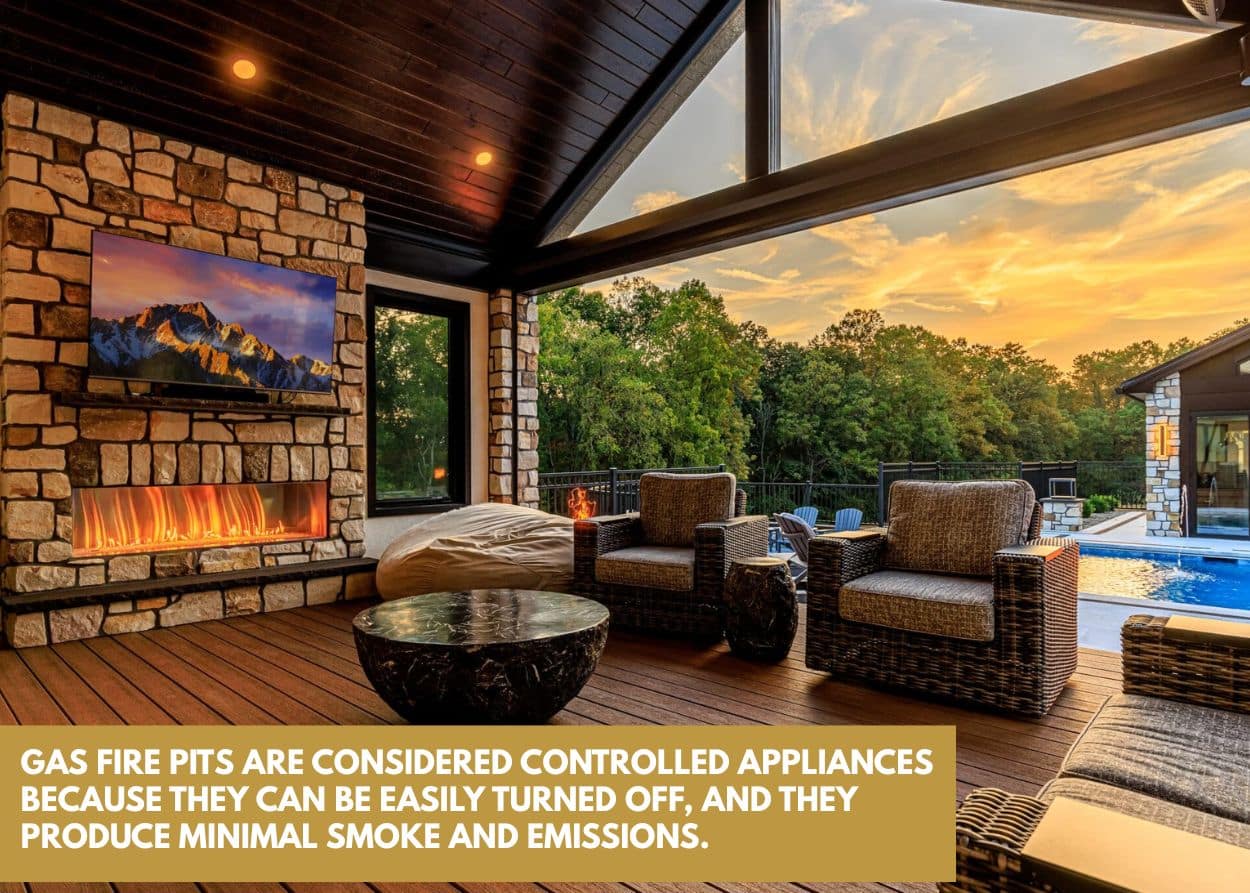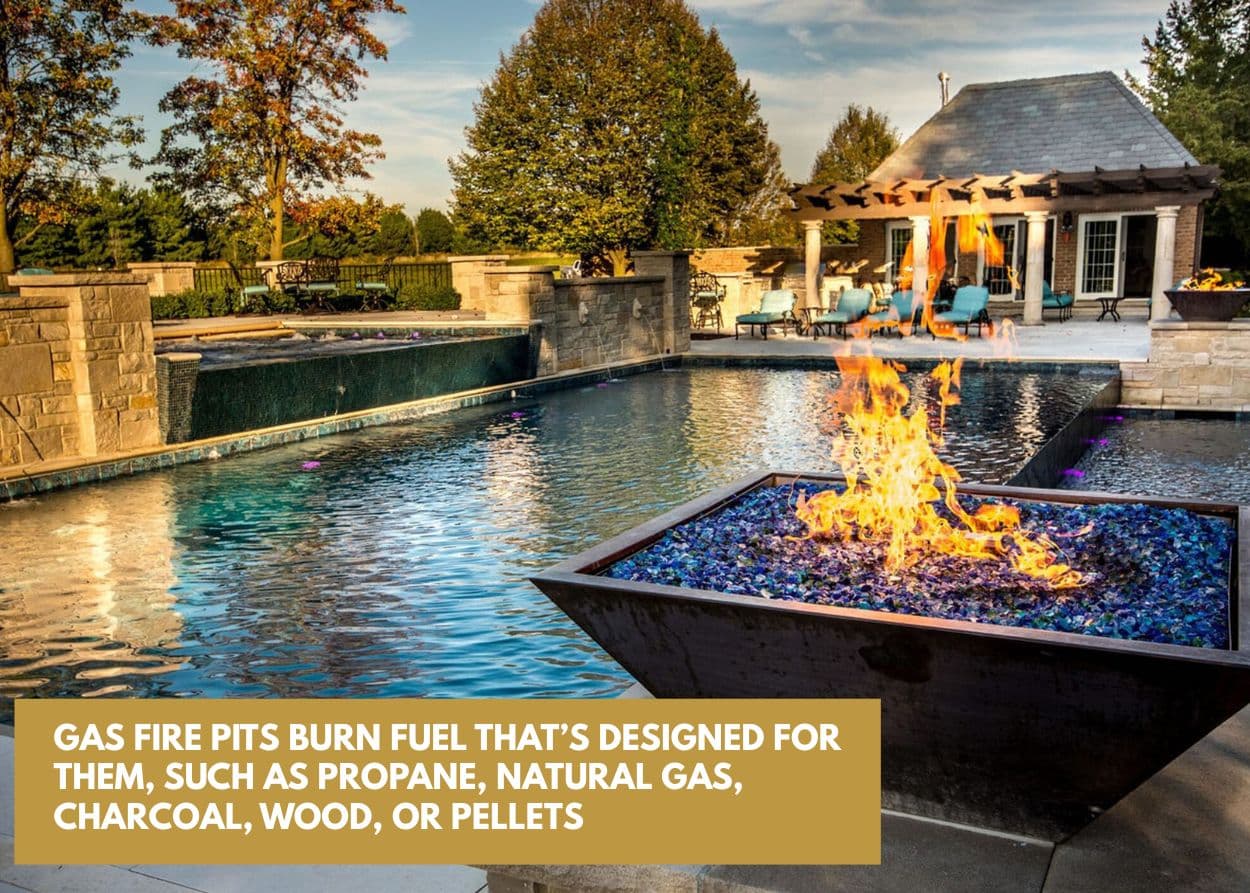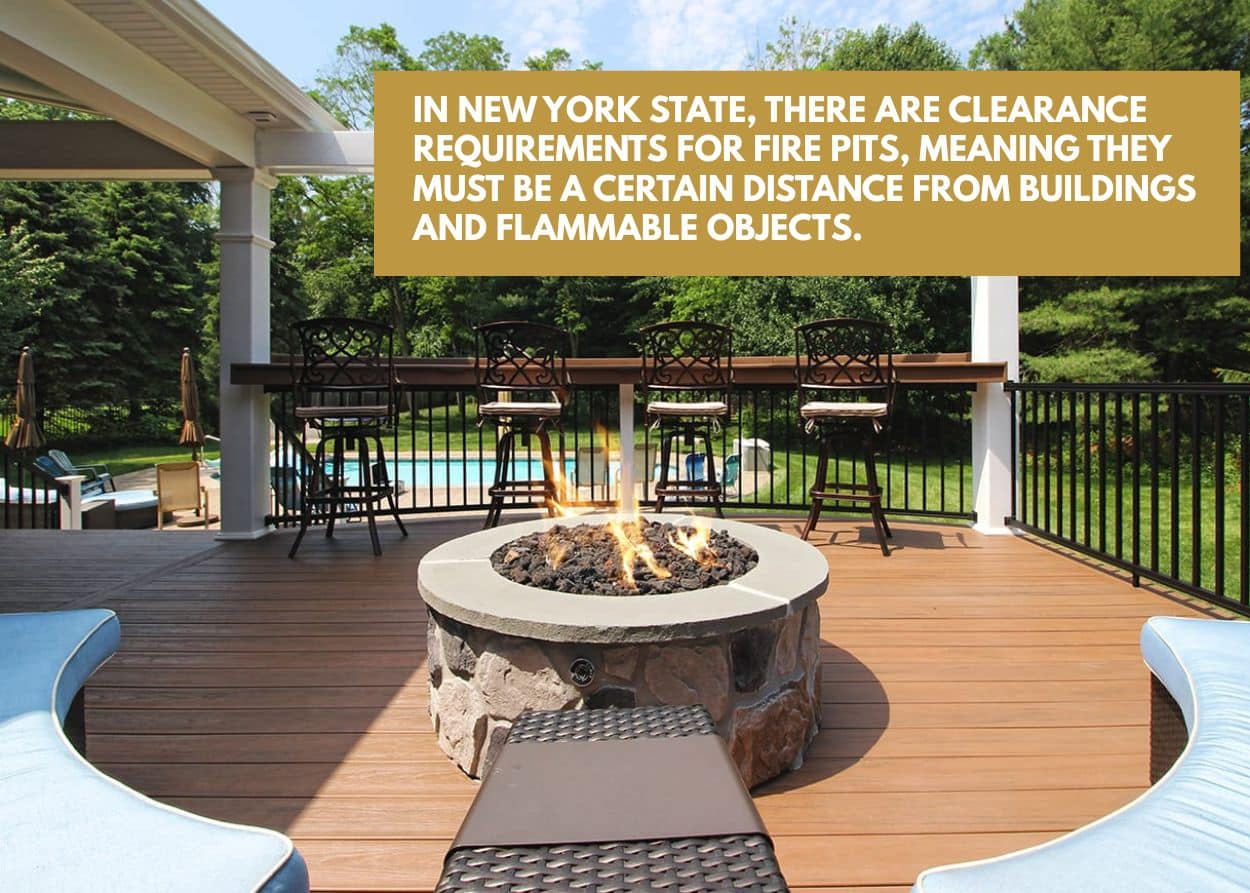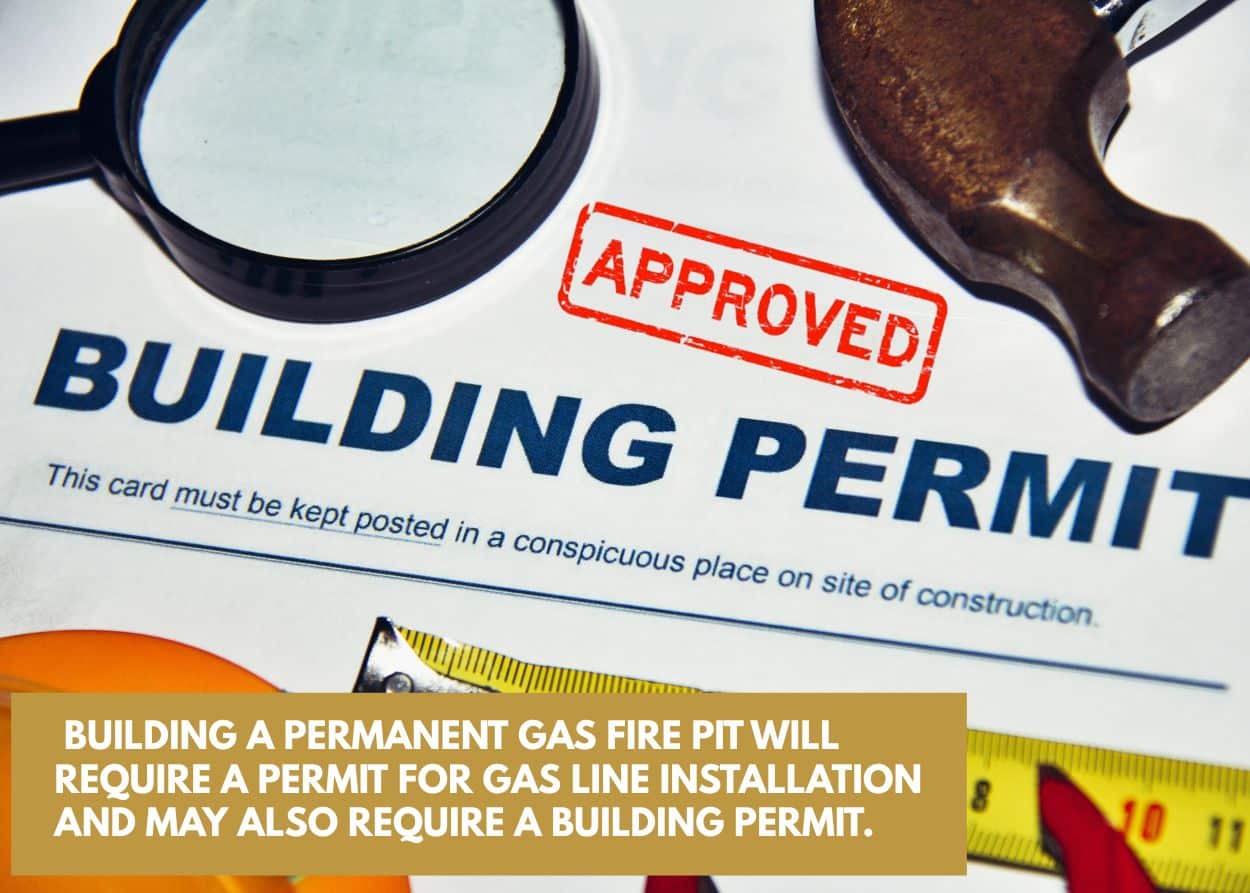Do I Need a Permit for a Gas Fire Pit in New York? Understanding State and Local Regulations
If you live in New York State, with its stunning outdoor vistas, you probably dream of adding a gas fire pit to your property, sitting around the crackling flames, and drinking spiced cider with friends.
But this dream comes with a little question that gnaws at the back of your mind: Do I need a permit for this? What are the local regulations?
Here at Keystone Custom Decks, we install outdoor fire pits to create a warm, cozy spot for you to gather with friends and family in the great outdoors. Today, we’ll walk you through the various permits and regulations that New York residents must comply with to add a stunning fire pit to their property.
Let’s get started!
Table of Contents
Do I Need a Permit for a Gas Fire Pit in New York?
To answer this burning question about gas fire pits, let’s first make one thing clear: there are two types of gas fire pits. Some fire pits are portable, and some are built into the hardscape.
Both types of gas fire pits can be operated in New York State without a permit. Gas fire pits are considered controlled appliances because they can be easily turned off, and they produce minimal smoke and emissions.

But if you want to build a permanent gas fire pit, you’ll probably need a permit. We’ll explore that more in a later section.
For now, we’d like to note that safety regulations for operating fire pits vary by location. For example, here are the fire pit regulations for some of New York State's largest cities:
- New York City: Fire pits are allowed in certain zoning districts and are subject to clearance requirements and other restrictions.
- Buffalo: Fires are banned unless they’re in a fire-resistant fireplace, stove, or barbecue grill.
- Yonkers: Fire pits are allowed so long as they follow size and clearance requirements
- Syracuse: Gas fire pits are generally allowed but are prohibited inside structures, under or upon roofs, and upon balconies or porches
- Albany: Fire pits are allowed as long as the operator abides by basic safety regulations.
As you can see, although gas fire pit rules vary by area, operating a gas fire pit does not require a permit. Instead, it requires:
- Seeing if a gas fire pit is permitted where you live (which it probably will be, unless you live in New York City itself or don’t have space for proper clearance)
- Seeing what the safety regulations are, and making a point to comply with them
If you do this, you’ll be good. You don’t need a burn permit unless you’re building an open fire.
Understanding the Difference Between Fire Pits and Open Fires
If you had it in your head that you might need a permit to put a gas fire pit on your property, you may have gotten confused between the notion of a fire pit and an open fire.
So what makes the difference?
There are two things.
First, there’s the idea of containment and control. A gas fire pit is contained within a non-flammable structure and can be easily switched on and off by the user. As such, it poses almost no fire risk as long as it’s kept away from flammable structures, materials, and objects. Outdoor fireplaces, portable stoves, and barbeque grills are also fires that are not considered “open fires.”
The other reason these items are not considered open fires is because of the materials they’re burning. These structures burn fuel that’s designed for them, such as propane, natural gas, charcoal, wood, or pellets.

On the other hand, open fires are often used as a way to dispose of yard waste, scrap wood, and other unwanted materials.
Open fires, such as waste fires and bonfires, can be large and relatively uncontained, increasing the risk of the fire spreading out of control. The materials burned might include trash like coated paper and treated wood that might release toxic chemicals into the air. For these reasons, there are strict regulations regarding open fires that vary by area and depend on the weather conditions.
Fire pits designed for wood burning operate in a gray area and may be considered an open fire in some circumstances.
Open burning often requires a permit. You can find a detailed list of open burning permits and regulations on the official New York State government website.
Safety and Clearance Requirements for Installing a Gas Fire Pit
Although specific requirements vary by area, here are the basic restrictions you’re likely to encounter as you work to put a gas fire pit on your property.
Zoning Requirements:
If you live in New York City proper, you’ll only be able to have a gas fire pit if you live in an R-3 dwelling—essentially a single-family residence or duplex that’s detached, not part of an apartment complex.
Clearance Requirements:
No matter where you live in New York State, chances are there are clearance requirements surrounding fire pits. Clearance requirements stipulate that your fire pit must be a certain distance from buildings and flammable objects.

The most common clearance distances are 10 ft and 25 ft.
Size Restrictions:
Some areas put size restrictions on fire pits. For example, in Yonkers, fire pits must not exceed 3 feet in diameter and 2 feet in height. However, many areas do not list specific size requirements.
Do I Need a Building Permit to Construct a Gas Fire Pit?
Although you don’t need a permit to operate a gas fire pit in New York, as we mentioned earlier, you’ll probably need a permit to build a permanent gas fire pit. Here are the permits you’ll need to consider.
Gas Lines: No matter where you live in New York State, you need a permit to install or modify gas lines to your gas fire pit.
Building Permits: Depending on where you live and the scope of your hardscaping project, you might need a building permit to construct your permanent gas fire pit.
How to Check Your Local Regulations and Permit Requirements in New York
As you can see, there are several factors to consider when it comes to fire pits. Building a permanent gas fire pit will require a permit for gas line installation and may also require a building permit.

To learn more and obtain the necessary permits, contact your local building or code enforcement office.
You’ll also have to consider fire safety, so make sure your fire pit complies with state and local fire safety codes, including placement and construction materials.
Although this doesn’t apply to gas fire pits, if you’re considering other options such as a fire pit for burning scrap wood, make sure it complies with local environmental regulations.
And finally, if you live in an HOA, do a quick check to make sure your fire pit project doesn’t go against any of their rules.
But remember, you don’t have to navigate the world of permits and regulations alone! Local contractors experienced in building gas fire pits are very familiar with the process and would love to help you navigate it.
How Your Local Contractor Can Help
Here at Keystone Custom Decks, we have many satisfied customers whose outdoor spaces have been transformed into a haven of comfort and relaxation. Outdoor fire pits and fireplaces are a big part of that. Not only does a good fire take the edge off chilly evenings, but gathering around a fire has numerous psychological benefits.
However, we know that your dream outdoor building project can be hampered by confusing permit issues, as regulations vary by jurisdiction and terms are sometimes unclear. But remember—as local contractors, part of our job is to help you navigate these issues!
Contact us today and tell us about the project you’re envisioning. We’ll help you figure out the steps you need to take to get it done!
And this goes beyond gas fire pits. We’re also experienced in building:
Finally, if you’re interested in learning more about outdoor living in New York State, you might be interested in some of our other blogs:






